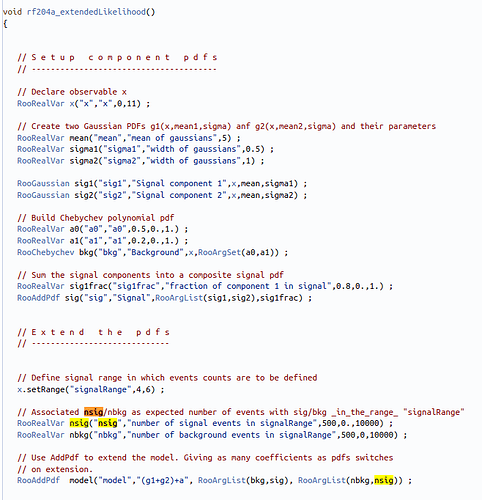Dear @jonas,
Thanks for your reply. To explain you, what I really wanted to understand, fortunately, I found one post on root forum. In this post RooStats: Change of Constraint does not change Profile Likelihood Plot, they are doing the same statistical analysis as mentioned in the paper above.
In this post, you can see that they are explaining μ^s by using a variables of half live, lifetime of experiment and conv_factor as defined in paper and then they are using these parameters in “nsig”. I have put this screenshot below.
But in my case, if you see my code in the first post, i am using “Nsig” and “Nbkg” as the expected number of events in the signal and background region, right?
More or less like here:
So, can you tell me which one for my case is relevant?
Thanks!

